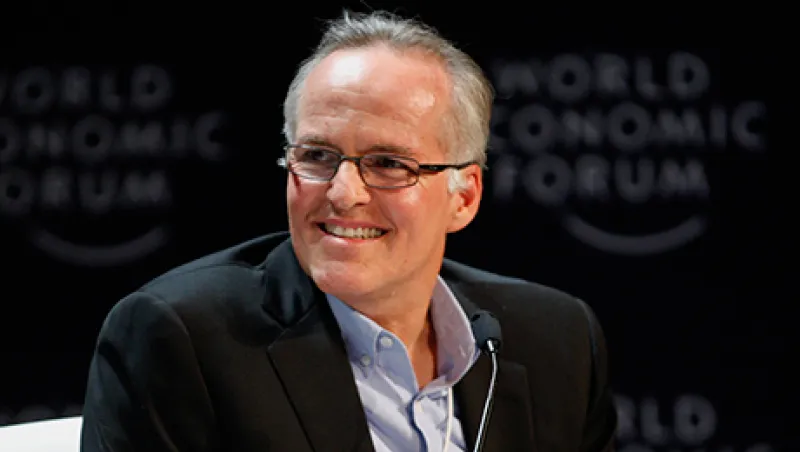lCarlos Rodríguez-Pastor has long marched to his own tune. The Peruvian billionaire banker gambled on the rise of middle-class consumers 20 years ago when other local entrepreneurs were focusing on export markets. Today Rodríguez-Pastor, 56, presides over an empire of banking, insurance, shopping malls, supermarkets, real estate, home improvement stores, pharmacies, fast-food restaurants and for-profit private schools. “We are trying to build a middle-class ecosystem,” he says.
At the heart of this ecosystem is Intercorp Financial Services, which Rodríguez-Pastor chairs. Listed on the Lima stock exchange since a $310 million IPO in 2007, IFS combines Interbank, Peru’s fourth-largest bank by loans with an 11.7 percent market share, and Interseguro, the country’s third-largest insurer by assets. Net income at the outfit rose 29 percent last year, to 964 million nuevos soles ($302 million).
Rodríguez-Pastor’s middle-class dreams were born in California, to which his father, Carlos Sr., an entrepreneur anld politician, fled in 1968 when a left-wing military dictatorship took over in Peru. The son put himself through college at the University of California, Berkeley, by working as a teller in a Wells Fargo branch. He went on to Dartmouth College’s Tuck School of Business for an MBA. After stints in New York as co-head of emerging-markets sales at Citigroup and at a Banco Santander hedge fund, Rodríguez-Pastor headed back to Peru in 1994.
His father had returned to Lima four years earlier and headed an investor group that acquired Bank of America’s Peruvian operation in 1990 and then state-owned Banco Internacional del Peru, or Interbank, in 1994. His son took over the following year, after Carlos Sr. died suddenly of a heart attack.
“We started focusing on consumers, because we felt that with the Peruvian economy rapidly improving, banks should get more involved in retail,” says Rodríguez-Pastor. It was a bold call. The Maoist terrorist movement known as Shining Path was still raging and the economy was in disarray after years of stagnation and hyperinflation.
To reach consumers, Rodríguez-Pastor placed his bank branches inside supermarkets owned by the largest chain, Supermercados Wong. “It made no sense to build standalone branches and ask customers to leave their banks and come into ours,” he says. In traffic-clogged Lima and other cities, supermarket shoppers welcomed the chance to make payments on their utility bills and to change dollars into soles at the same place where they purchased their foodstuffs.
“To this day, Interbank remains far more focused on retail than other Peruvian banks,” says Alonso Aramburú, a New York–based analyst for Brazilian investment bank BTG Pactual. The three largest Peruvian lenders — Banco de Crédito del Perú, BBVA Continental and Scotiabank Perú — average a 65-35 split between business and retail loans, compared with Interbank’s 50-50 ratio. The supermarket venue proved so successful that in 2003 Rodríguez-Pastor acquired his own chain, Supermercados Peruanos, and equipped the stores with ATMs to create the country’s largest bank distribution network. Interbank has also used the supermarkets to become the leader in credit cards, with a 25 percent market share.
And there is room for growth. “There are some interesting liquid investments in Peruvian financials, because the banking system is very consolidated and loan penetration is still low,” says Verena Wachnitz, London-based manager of T. Rowe Price’s Latin America Fund. The top four banks claim more than 80 percent of banking assets. Loans to the private sector total about 35 percent of gross domestic product, well behind Brazil’s 62 percent and Chile’s 90 percent.
The strongest headwind facing Interbank, and other Peruvian lenders, is the more than 11 percent depreciation of the sol versus the dollar over the 12 months ended September 14. “This is creating a mismatch for the banks,” says Aramburú. Allowed to save in either currency, Peruvians are opting for more dollar deposits. At the same time, banks, pressured by Banco Central de Reserva del Perú, are trying to cut their dollar risks by lending more in soles. Until now, Peruvian banks have used deposits to cover about 75 percent of their funding. But with deposit costs rising as the sol falls, banks may be forced to find other, more expensive sources of funding.
Of broader concern is the slowing economy, which is projected to expand this year at well under half the 6.4 percent annual rate averaged from 2004 to 2013, during the commodities boom.
But Rodríguez-Pastor is counting on what he calls “the demographic bonus” for a return to better times. About 60 percent of Peruvians are under 32 years of age. His Supermercados Peruanos, InkaFarma drugstores and Real Plaza shopping malls cater to these Millennials. “They are striving to have better lives than their parents and are convinced the future will be a lot better than the past,” he says.
For his newest investment, private schools, he expects both immediate and long-term payoffs. He has built 29 schools under the name Innova Schools with 19,000 students from kindergarten through secondary school and is aiming to have 100 schools by 2021. Monthly tuition averages $125, within the means of emerging middle-class families who often complain about the poor quality of public schools. Many of the schools are located close to Rodríguez-Pastor’s shopping malls and other retail centers. “Middle-class families move to neighborhoods that have good schools,” he explains.




